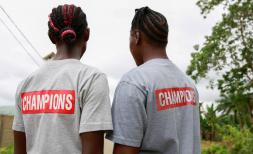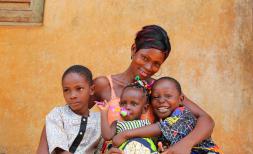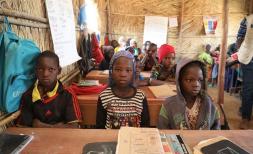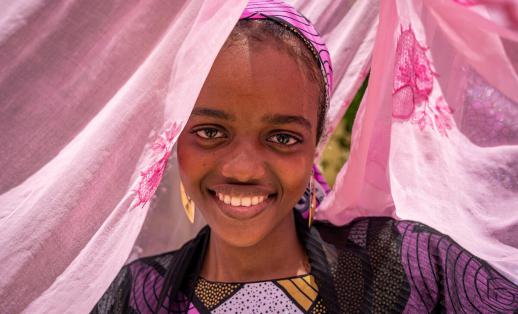What did COP26 deliver for global education?
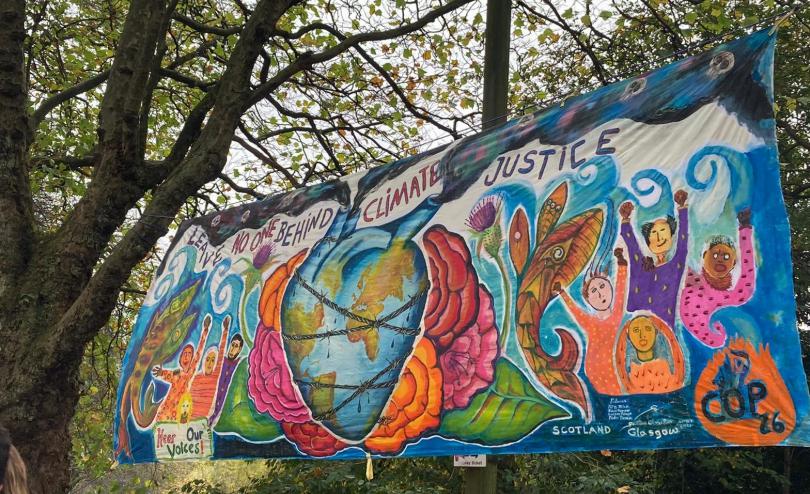
Earlier this month, the 26th UN Climate Change Conference (COP26) concluded in Glasgow, a key opportunity for countries to protect children’s rights to a liveable planet, and a healthy, sustainable future. Yet behind the rhetoric, leaders failed to deliver the progress needed to protect them from the climate crisis.
Countries discussed solutions to “keep 1.5C alive” and adapt to climate change. Yet empty words and little action shows children and youth’s demands are not being heard.
Education is one solution that could help accelerate progress towards building a more equitable, sustainable future. Quality climate education is essential for building the skills and knowledge of young people to take climate action and build adaptive capacity to protect against climate risks. It can also transform harmful norms that make girls more vulnerable to climate impacts.
At the same time, the climate crisis is having a devastating impact on children’s right to quality education and is expected to contribute to preventing 12.5 million girls from attending school every year by 2025.
Many governments have acknowledged education as key to tackling the climate crisis through Article 12 of the Paris Agreement. Yet it remains one of the least implemented aspects. This means that children are not being equipped to deal with the immense challenges that lie ahead – as education systems are unprepared to respond to climate risks.
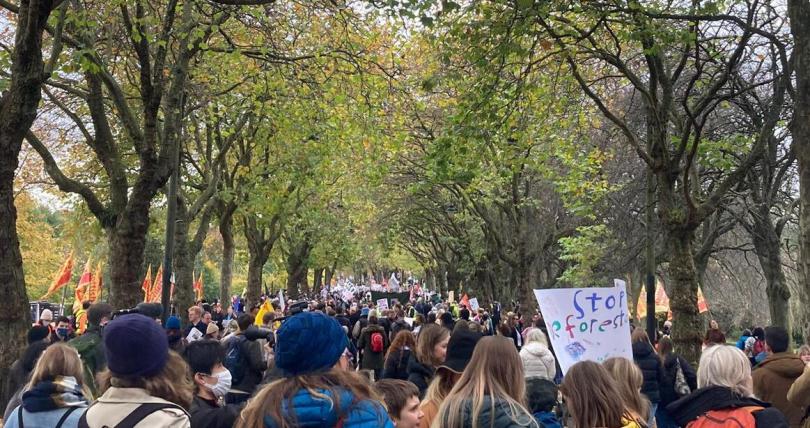
Fridays for Future Protest at COP26 in Glasgow - 5th November 2021.
Between pavillions, protests and pleanries, these are my top three takeaways from COP26 and what they mean for the global education community.
1. High-level support for education – but this is not yet backed up by action
Week one ended with a dedicated day on “Youth and Public Empowerment” to highlight the critical role of public awareness and education. Environment and Education Ministers adopted a new statement Learn for our planet, Act for the climate – which, whilst welcome news for the education community, failed to consider the disproportionate impacts for women and girls.
As COP26 President, the UK continued to bang the drum for girls’ education as a solution to the climate crisis – despite their own girls’ education aid cuts. Speaker of the US House of Representatives Nancy Pelosi declared investment in girls’ education “a top priority.”
Leaders also adopted a new 10-year Glasgow Work Programme on Action for Climate Empowerment (ACE) to support implementation of Article 12 of the Paris Agreement which encompasses education, amongst other elements crucial for building children’s and youth’s capabilities.
Yet, as for other negotiations, references to rights-based approaches were completely deleted from earlier drafts of the ACE work programme - the first time this programme has been created. Reporting on the programme remains voluntary, and little guidance is given to countries, making it difficult to compare progress.
2. Calls from children and young people for quality climate education – but they are not being heard
During my week in Glasgow, it was inspiring to see thousands of children and young people, including those on the frontlines of the climate crisis, demanding action both in events and outside on the streets. Yet child activists were not permitted into the main negotiations and plenary sessions.
Youth partners Mock COP and Youth4Climate led the way in bringing together leaders for the Environment and Education Ministers Summit as part of a collective effort to integrate sustainable development into education and empower young people to take climate action.
YOUNGO together with UNICEF spearheaded the Declaration on Children, Youth & Climate – a commitment to accelerate child and youth-centred climate policy including on education, endorsed by a growing number of states. As COP26 President, the UK could show leadership by becoming the next country to sign up.
Climate activists from Fridays for Future called for the urgent need for schools to teach them about climate change, whilst youth representatives from Nepalese Youth for Climate Action, Transform Education and YOUNGO highlighted the impacts of the climate crisis and the role of education as a solution at an event co-hosted by Save the Children, Plan and UNICEF. It is vital that the education community amplifies, supports, funds and open doors for children and young people who are leading the charge in this space.
3. Strong civil society support for climate education – yet education missing from adaptation agenda
Throughout COP26, we saw strong civil society presence on education through an impressive programme of side-events, building on emerging work in this space in recent months. Highlights included a Resilience Hub panel event on fostering connections between nature and play for child wellbeing and resilience, and an event with Education International and Earth Day on the importance of civic education, vocational skills, and teacher training.
Outside the official programme was where some of the most transformative conversations were taking place, with youth activists highlighting the need to decolonise curriculums, and centre black, indigenous and people of colour owned knowledge and solutions through education. Check out this inspiring panel discussion on the power of knowledge.
It is clear from the discussions that there is an opportunity within the adaptation and resilience agendas to ensure education systems and learning structures are protected from the impacts of the climate crisis. To do so requires risk-informed approaches to building resilience in education systems, and increased financing for adaptation and anticipatory action. There is also more work needed to accelerate the ACE agenda so that children are prepared to deal with the challenges that they face now and in the future.
As Johnny Dabrowski, youth climate activist and co-founder of the Climate Education Team of Fridays for Future, noted “the aim of education is about knowledge and values, not facts. Governments fear climate education because it’s about purpose and values.” Achieving net zero emissions by 2050 requires values, and actions not words. We will continue to work with children and young people to hold governments to account for their commitments and push for progress.
If we are to build a fairer, greener, and more just future for all, then we must put children’s demand for, and right to, education front and centre.

